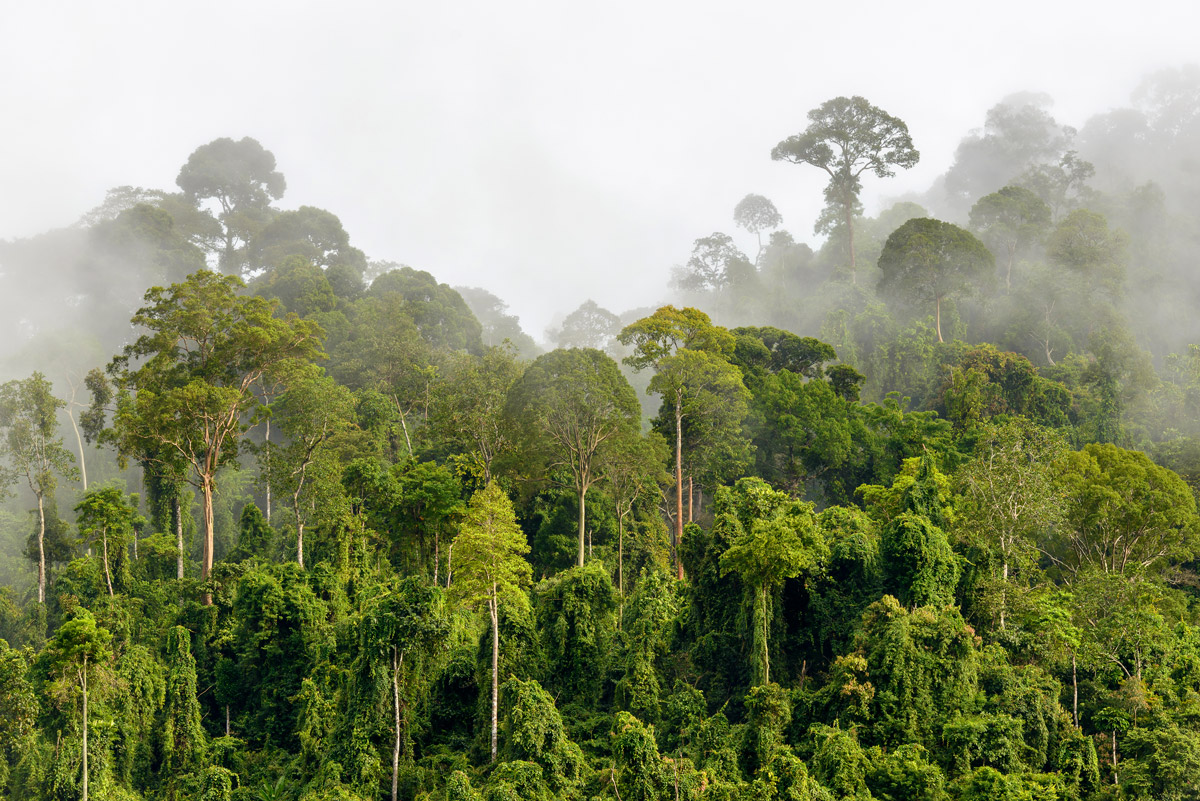Assuming easy carbon removal from the atmosphere is a high-stakes gamble, Stanford scientists say
Stanford scientists explain the risks of betting the world’s future on massive-scale deployment of carbon removal technologies.
With the current pace of renewable energy deployment and emissions reductions efforts, the world is unlikely to achieve the Paris Climate Agreement’s goal of limiting global warming to 2 degrees C above pre-industrial levels. This trend puts in doubt efforts to keep climate change damages from sea level rise, heat waves, drought and flooding in check. A potential solution being widely discussed is removing carbon dioxide from the atmosphere, also known as “negative emissions.”

Stanford researchers say carbon removal techniques such as ecosystem restoration are well understood, but others involve immature technologies and may not scale up as fast as policymakers hope. (Image credit: iStock)
However, in a new perspective published in the journal Science, researchers at Stanford explain the risks of assuming carbon removal technologies can be deployed at a massive scale relatively quickly with low costs and limited side effects – with the future of the planet at stake.
“For any temperature limit, we’ve got a finite budget of how much heat-trapping gases we can put into the atmosphere. Relying on big future deployments of carbon removal technologies is like eating lots of dessert today, with great hopes for liposuction tomorrow,” said Chris Field, a professor of biology and of Earth system science and director of the Stanford Woods Institute for the Environment.
Reforestation and little tested technologies
Some strategies for carbon dioxide removal are well understood, such as planting trees that will store carbon from the atmosphere. Others involve immature, little tested technologies, such as bioenergy with carbon capture and storage. In that strategy, carbon dioxide produced from biomass energy is stored deep underground. In another technology called direct air capture, chemical processes extract carbon dioxide from the atmosphere.
“The models generating possible trajectories of climate change mitigation bet on planetary-scale carbon removal in the second half of the century,” said Katharine Mach, a senior research scientist at Stanford’s School of Earth, Energy & Environmental Sciences. “For policymakers trying to limit the worst damages from climate change, that bet is reckless.”
The researchers don’t reject carbon capture, instead arguing that there are important near-term opportunities for carbon removal at modest scale, often with other benefits for nature and people, and critical needs now for developing the technologies of the future. But heavy reliance on biomass energy with carbon capture and storage could require tremendous land areas. For example, relying on the technology to achieve a temperature increase of 2 C or less could require an amount of productive land equivalent to about 25 to 80 percent of total global cropland, up to about 8 percent of all of the land on Earth.
“This puts climate change mitigation, global food security and biodiversity protection on a collision course with no easy off-ramps,” says Field.
Peak and decline
Many of the climate policy discussions supporting reliance on atmospheric carbon removal focus on the idea of “peak and decline,” which involves global temperatures peaking and then dropping as carbon removal technologies surpass emissions. However, the scientists argue that peak and decline may ignore climate impacts that won’t disappear even if the planet starts to cool. For example, if warming triggers collapse of the Antarctic ice sheet, the resulting sea level rise would continue for hundreds of years.
Further, Field and Mach warn that hoping carbon removal technologies will kick in may delay concrete actions that could be taken now.
“At the right scale, carbon dioxide removal approaches are a key tool in the climate solutions kit,” Mach said. “Avoiding can-kicking ethics, however, means putting aside assumptions that massive deployments will easily materialize decades into the future. Instead, we need to embrace whole-hearted mitigation today.”
Ultimately, the scientists support a balanced approach that includes research and development of carbon removal technologies but also makes use of available means to limit and reduce carbon emissions, such as investing in renewable energy sources.
“In managing the risks of a changing climate, we need a diversified game plan. An appealing long shot is not a plan and it is not a good way to protect the planet on which we depend,” said Field.
Chris Field is also the Melvin and Joan Lane Professor for Interdisciplinary Environmental Studies, the Perry L. McCarty Director of the Stanford Woods Institute for the Environment and senior fellow at the Precourt Institute for Energy. Katharine Mach is also an adjunct assistant professor at Carnegie Mellon University, visiting investigator at the Carnegie Institution for Science and director of the Stanford Environment Assessment Facility at the Stanford Woods Institute for the Environment.
Media Contacts
Chris Field, Stanford Woods Institute for the Environment: (650) 823-5326, cfield@stanford.edu
Katharine Mach, Department of Earth System Science: (650) 561-5640, mach@stanford.edu
Devon Ryan, Stanford Woods Institute for the Environment: (650) 497-0444, devonr@stanford.edu



